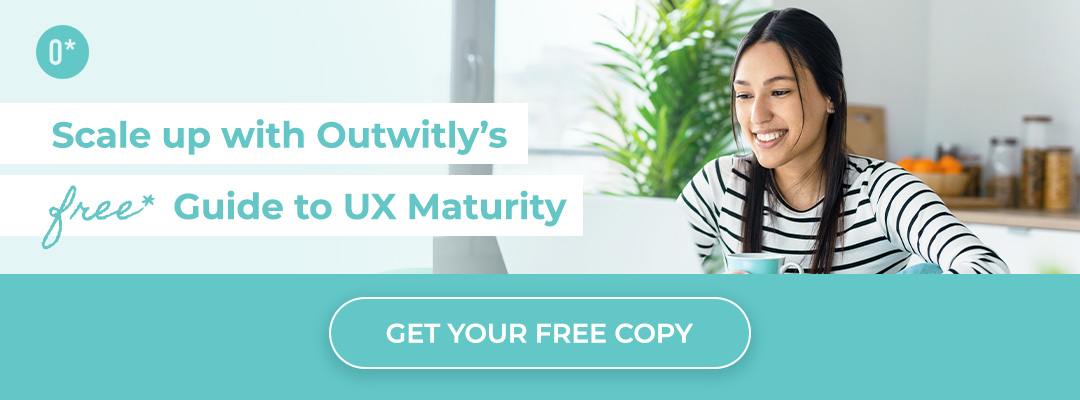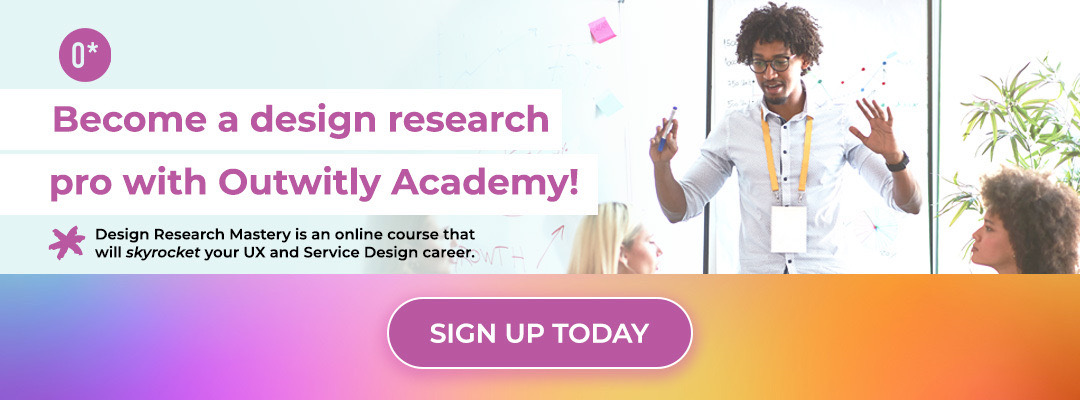In the world of UX, a designer or researcher’s mission is fairly clear – to reshape the world for the better! Being a UX designer is about elevating human experiences, finding innovative solutions to improve what isn’t working, and creating transformative, delightful user experiences. Designers and researchers are fueled to tackle this mission by their inherent optimism, creativity, and curiosity. Still, sometimes, challenges arise that steer even the most dedicated designers off course – things like shifting priorities, technological constraints, and the struggle to conduct genuine user research, to name a few.
These obstacles lead to frustration, burnout, and a feeling of vulnerability, leaving a significant gap between our ideals and the reality of UX work, especially in understanding its comprehensive nature. This unaddressed gap continues to hinder our ability to create the transformative impact we strive for, but it doesn’t have to be this way.
Today’s post is going to dive into:
- Five common roadblocks and challenges faced by practitioners today.
- The Expectation Gap – what we learn in school vs. what we really need to know.
- Six tips for how you can close that gap and reach the full potential of UX.
Let’s get started!
The Current State of UX Design and Research
If asked, “What do designers and researchers want at their core?” our response would be simple – to make a real impact on people’s lives! To see what is clunky, inefficient, and not working and make it better. To transform lacklustre experiences into something delightful for the humans that engage with them. Typically, creative, curious, and optimistic people are drawn to UX. We get into this field of work because we have certain mindsets and goals that connect us and a lot of hope that we can make an impact.
However, being a creative optimist in spaces where designers are needed (think: large organizations, corporate structures, government, etc.) means you will encounter challenges and roadblocks all the time. We’re called to be where things require improvement, so naturally, most of us end up in places with really complex (and sometimes bureaucratic!) systems, disjointed processes, and discouraged employees. Despite these obstacles being totally within our wheelhouse, it can still be emotionally taxing to make this change happen in these types of environments.
Facing these challenges time and time again can leave you feeling confused, burnt out, and frustrated. There is a disconnect between what you think you can do and what you want to accomplish. Over time, even the most resilient designer’s spirits get chipped away.
This blog post was inspired by a presentation given by our CEO and Founder, Sara Fortier, at the 2023 CanUX Conference this past November.
Six Common Roadblocks and Challenges Faced by UXers
As we mentioned above, there is a certain set of obstacles faced by UXers. A common thread among these challenges is being inhibited from impacting the world around you. After all, are you really a UX designer if you haven’t sent yourself into a downward spiral about whether or not you’re making an impact with your work? All jokes aside, let’s take a look at six common roadblocks and challenges faced by UX designers today:
- Shifting priorities – Often, teams struggle to set and maintain priorities or tasks. Sometimes, decisions are solely driven by product or engineering needs, overlooking the importance of UX governance. In this case, design decisions might get overridden by product managers or developers, hindering a UX designer’s ability to steer projects toward user-centricity.
- Bogged down by feature releases – The reality of rapid product launches in an Agile environment can be demanding. While focusing on tech-related aspects, there might be neglect in addressing design debt. This scenario leads to a disparity where tech debts are prioritized over design considerations, impacting the overall user experience.
- Technology limitations – Designers often face constraints imposed by the existing tech stack, regulations, or other technological barriers. These limitations might leave designers feeling they must compromise their design ideals or navigate complex, tedious, technically challenging procurement processes.
- Can’t do research with real users – Limited access to real user insights due to time and budget constraints or reliance on proxies often results in design decisions based on assumptions rather than concrete user data. Advocating for user research can be challenging, but it’s incredibly necessary! It can be frustrating to have to advocate for something so critical.
- Working in silos – Lack of collaboration, communication, and cross-departmental cooperation leads to a fragmented view of projects. When teams operate in silos, they miss out on leveraging diverse skill sets and learning opportunities, hindering collective growth.
- Managing stakeholders unfamiliar with design processes: Engaging stakeholders who lack familiarity with design methodologies poses challenges. Whether it’s resistance to change, fear of the unknown, or a general lack of understanding about design’s strategic value, navigating these dynamics without higher-level design influence can impede progress.
These trials and tribulations make us feel many things – vulnerable, exhausted, burnt out, discouraged, frustrated and confused. For readers who’ve been in their careers a long time, you know exactly what we’re talking about. Those newer in their careers may not have seen or felt this just yet, so our goal is to have you informed and equipped to handle anything that comes your way!
The Expectation Gap
The roadblocks and challenges above all relate to something important to name – the Expectation Gap. The Expectation Gap is the disconnect between what we know and what we need to know to make a real impact. Often, we learn important theoretical concepts and discuss critical core skills related to that scientific approach: we desire outcomes related to these learnings. However, many of us find ourselves stuck when it comes to how we accomplish these goals and affect change at scale in organizations. It’s safe to say then that our expectations for what our careers in UX will look like are not the realities of our day-to-day work.
What we believe UX to be is often associated with what we’ve learned in school. These are things like:
- Conducting research with users to deeply understand their needs.
- Uncovering insights and pain points of users.
- Conceptualizing solutions, features, products, and services to solve problems and discover needs.
- Collaborating with multidisciplinary teams to get the job done.
- Designing user flows, screens, and wireframes.
- Prototyping and testing designs with real users.
- Iterating and refining designs based on clear feedback.
Sure, this list is a huge part of what it takes to succeed as a UX designer! But there’s so much more involved that no one teaches us. A lot of us are thrown into the deep end when it comes to knowing how to do the following:
- Stakeholder alignment and expectation management.
- Project management and product management.
- Change management, training, and communication.
- Facilitation of difficult conversations.
- Negotiation between the business and the user.
- Systems thinking.
UX designers and researchers aren’t trained on how to do these things, and this disconnect causes us pain. It’s the distance between what we hoped, believed, and expected and the reality. No wonder it’s hard and leads us to feel discouraged – it can mentally taxing to push and challenge how people think and the way things are done. We bury our heads in the sand, wanting to be dogmatic about good UX, robust research, and creating amazing experiences, but without thinking more about this change and transformation at the core of our work, we will always run into this disconnect and fail to make the impact we yearn for.
Six Tips for Reaching the Full Potential of UX
In true Outwitly fashion, we’re closing out this blog with tangible advice and actionable steps for how you can start making impactful changes. Here are six tips for closing the Expectation Gap and reaching the full potential of UX.
-
- Find a mentor: Thankfully, the UX design and research community is very open to helping one another. Seek guidance from seasoned professionals to navigate the obstacles you come up against. Folks with more experience in their career will have stellar insight into the most effective strategies for making change.
- Say YES to opportunities: Embrace new challenges and unfamiliarity with an open mind! Stepping out of your comfort zone often leads to unforeseen growth and learning. Just remember, when opportunities to conduct UX design and research come your way, you must deliver – this is your chance to prove yourself and the value of your work!
- Experiment with new tools and techniques: Keep a pulse on technology trends and what sticks in the world of UX. Just like we encourage our clients and employees to innovate and embrace new technology fit for their needs, we need to for our work too. Experiment with new features in your favourite tools and embrace what simplifies your workflow.
- Communicate often and in the open with stakeholders: Maintain transparent and frequent communication with all stakeholders and key players. Keeping them informed and involved fosters alignment and understanding of UX objectives!
- Find design champions in different levels of your org: For your organization to start seeing the value in design and research, you need people (other than yourself and your design team) who believe and can do some heavy lifting on your behalf to convince others. Selecting the right people to pass your message along is critical to gain buy-in for new initiatives spurred by the insights from your research and getting the chance to actually do research.
- Grow your influence: Expand your circle of influence by focusing on what you can control and what you can influence. If you channel your focus into what you can control by doing an excellent job in your work, and properly directing your thoughts, feelings, and reactions toward others, more people will notice you, trust you, and you will have more opportunities to be in strategic and higher level conversations!
If we can leave you with one important message, let it be this: you are not alone if you’re feeling discouraged when it comes to making an impact as a UXer! Say yes to new opportunities, continue to evolve your skills, and never give up. You’ve got this.







